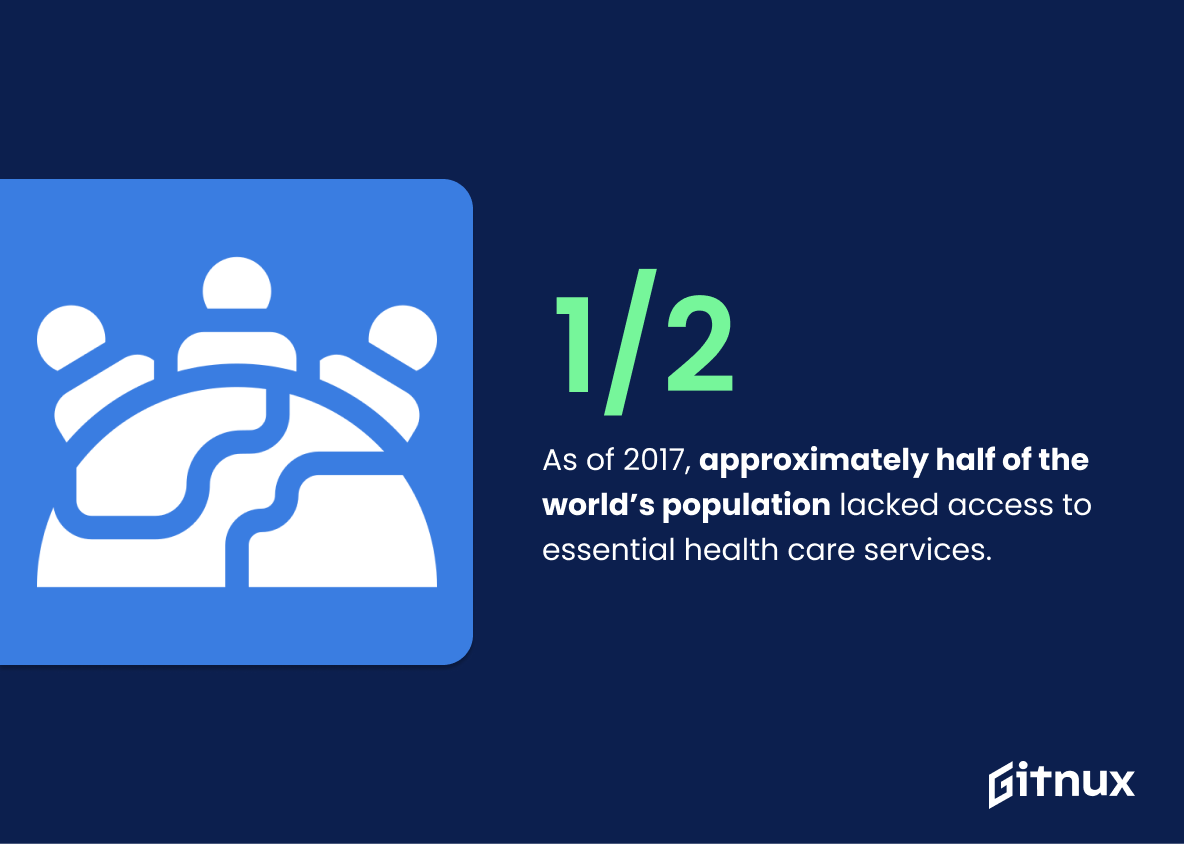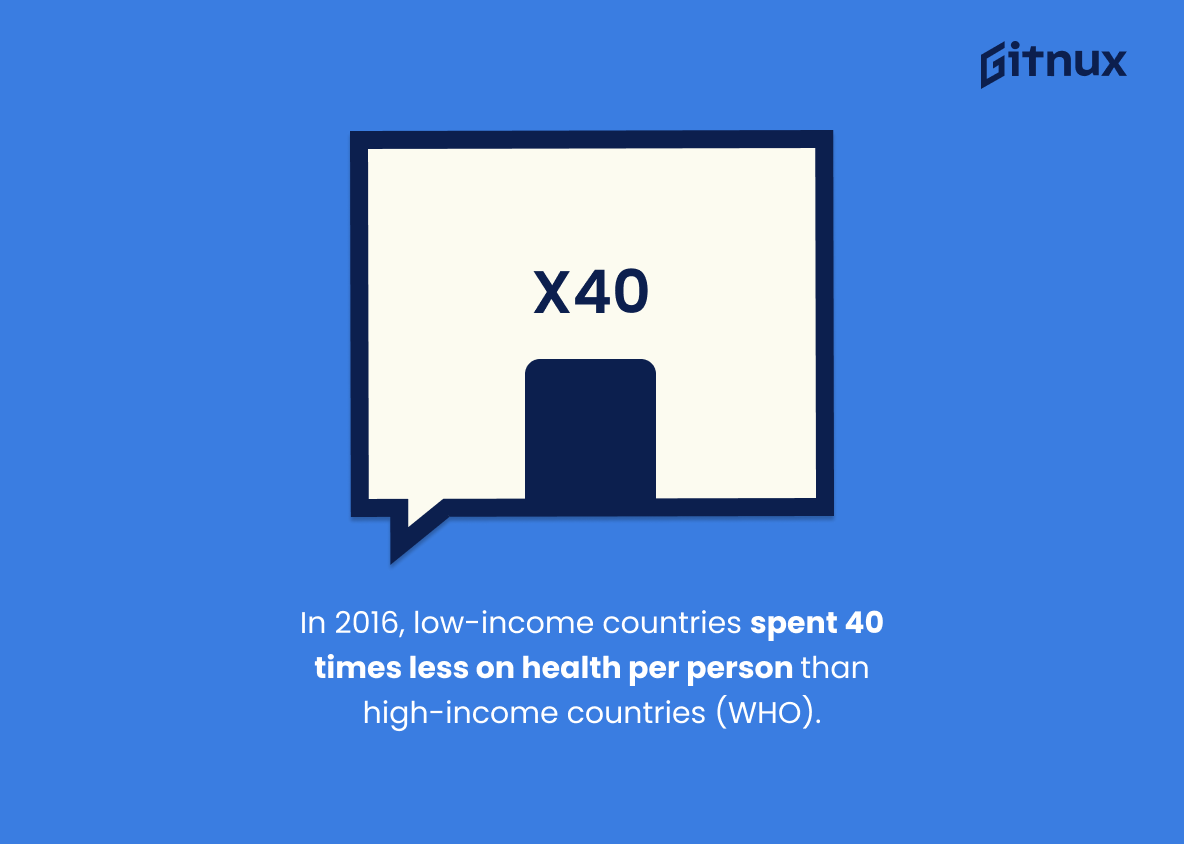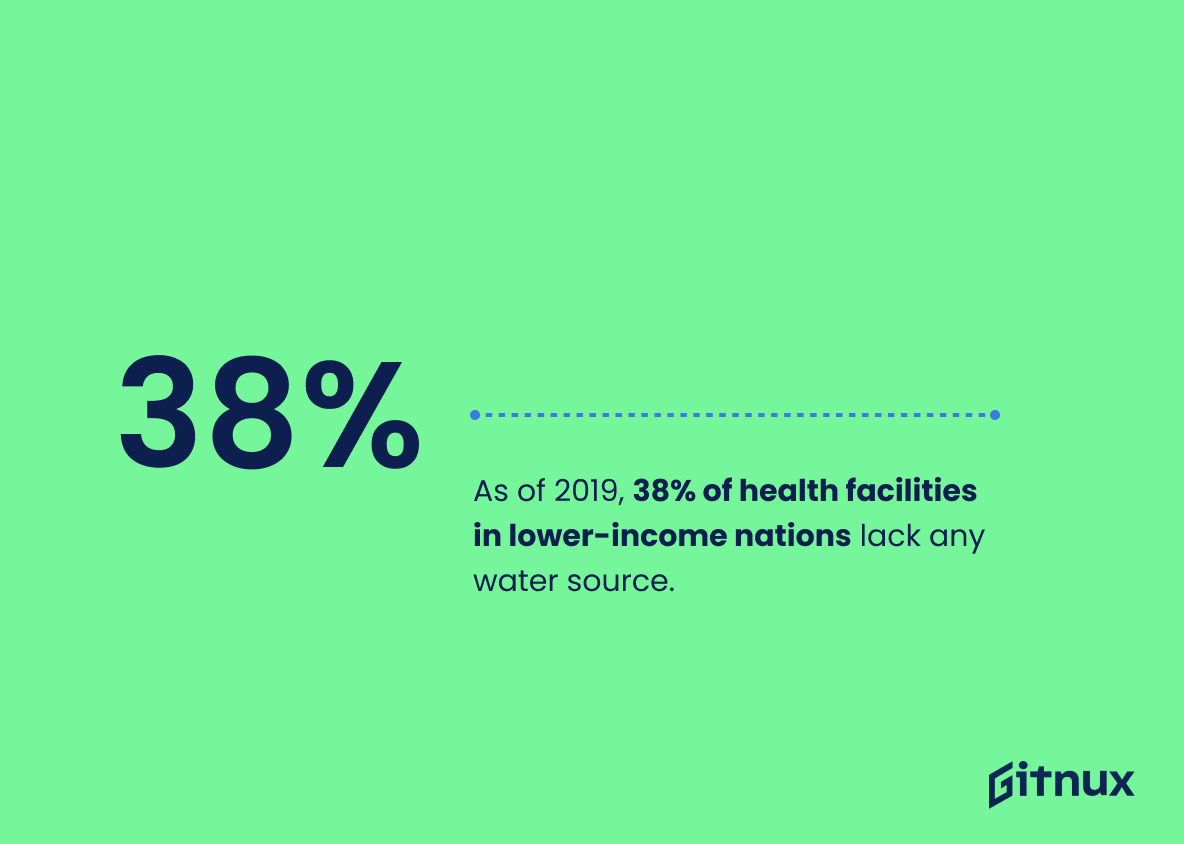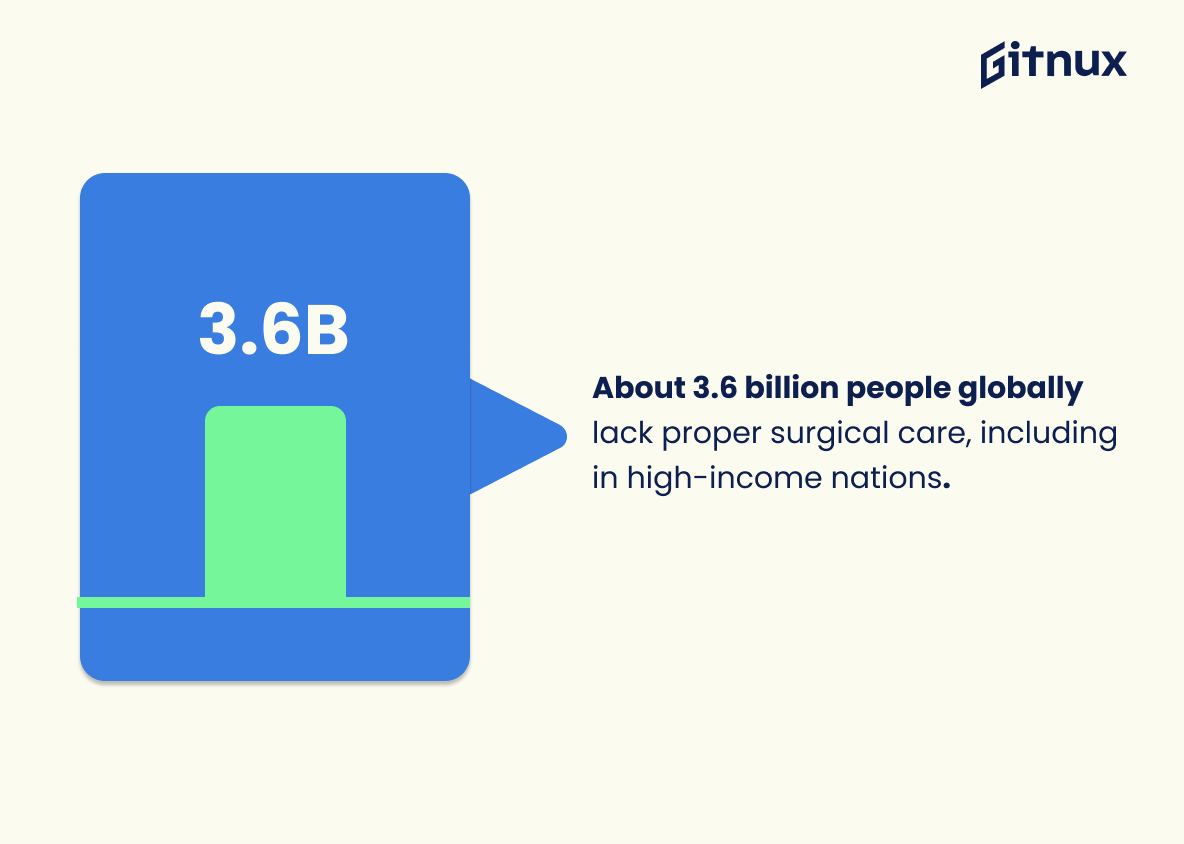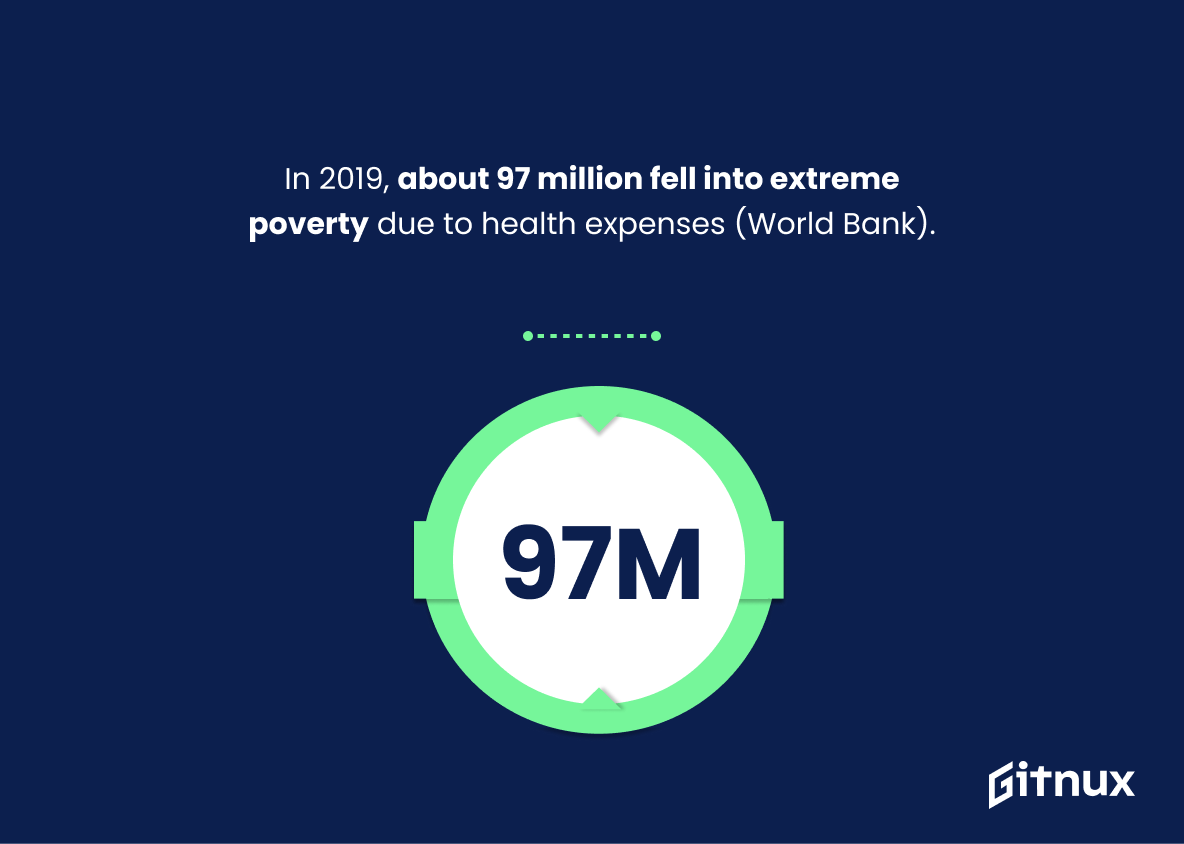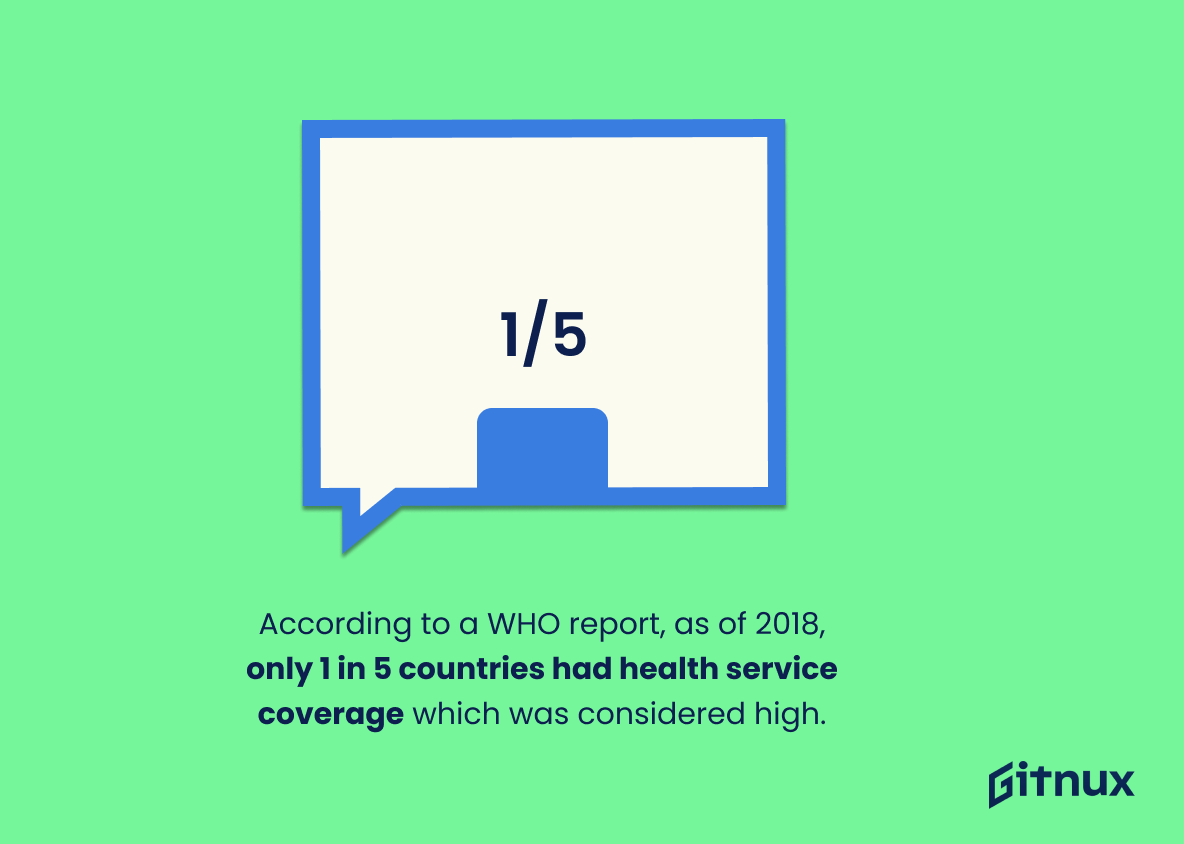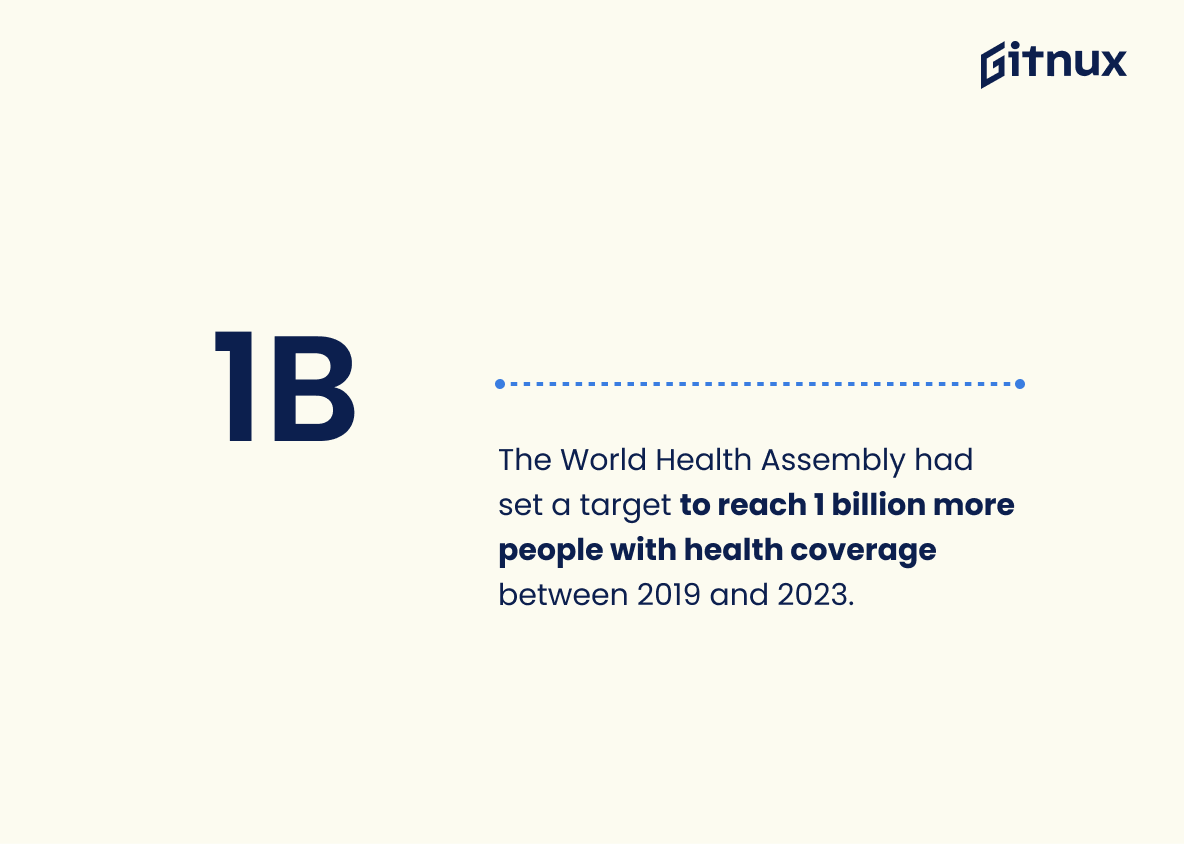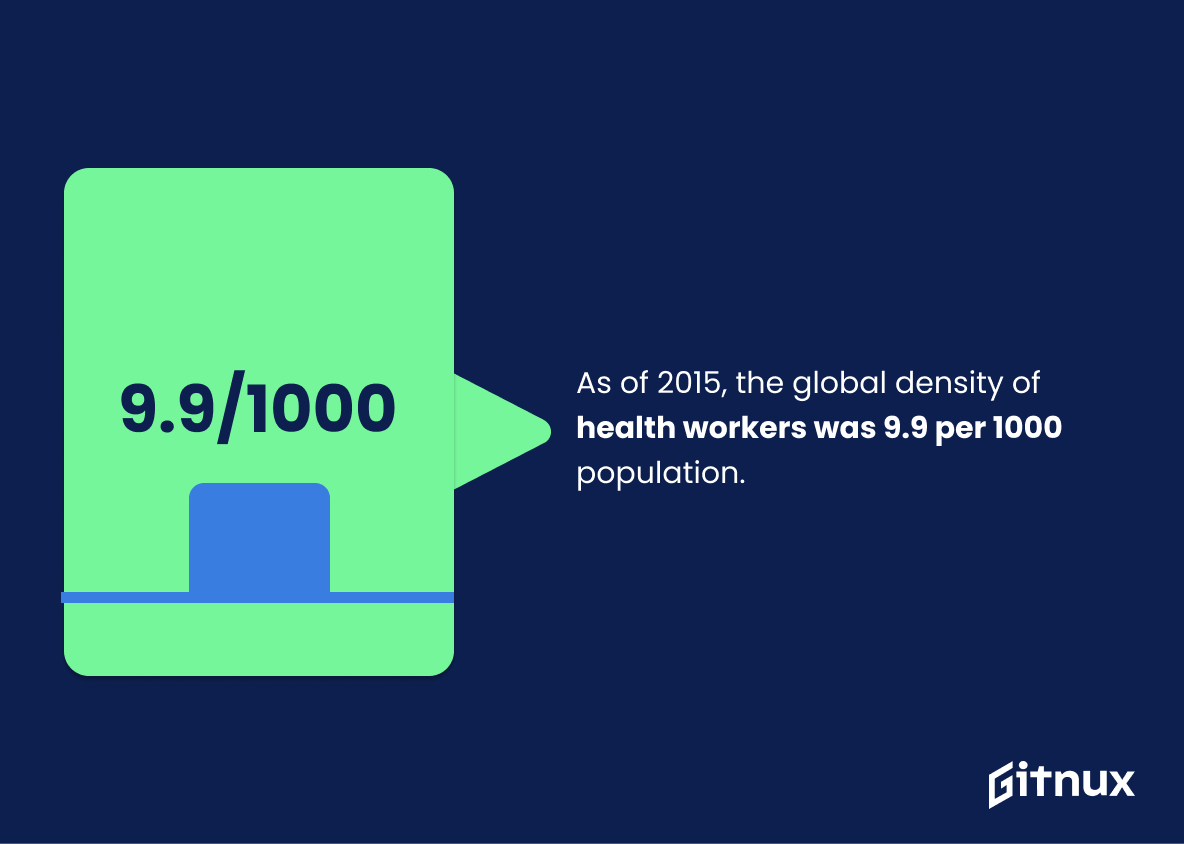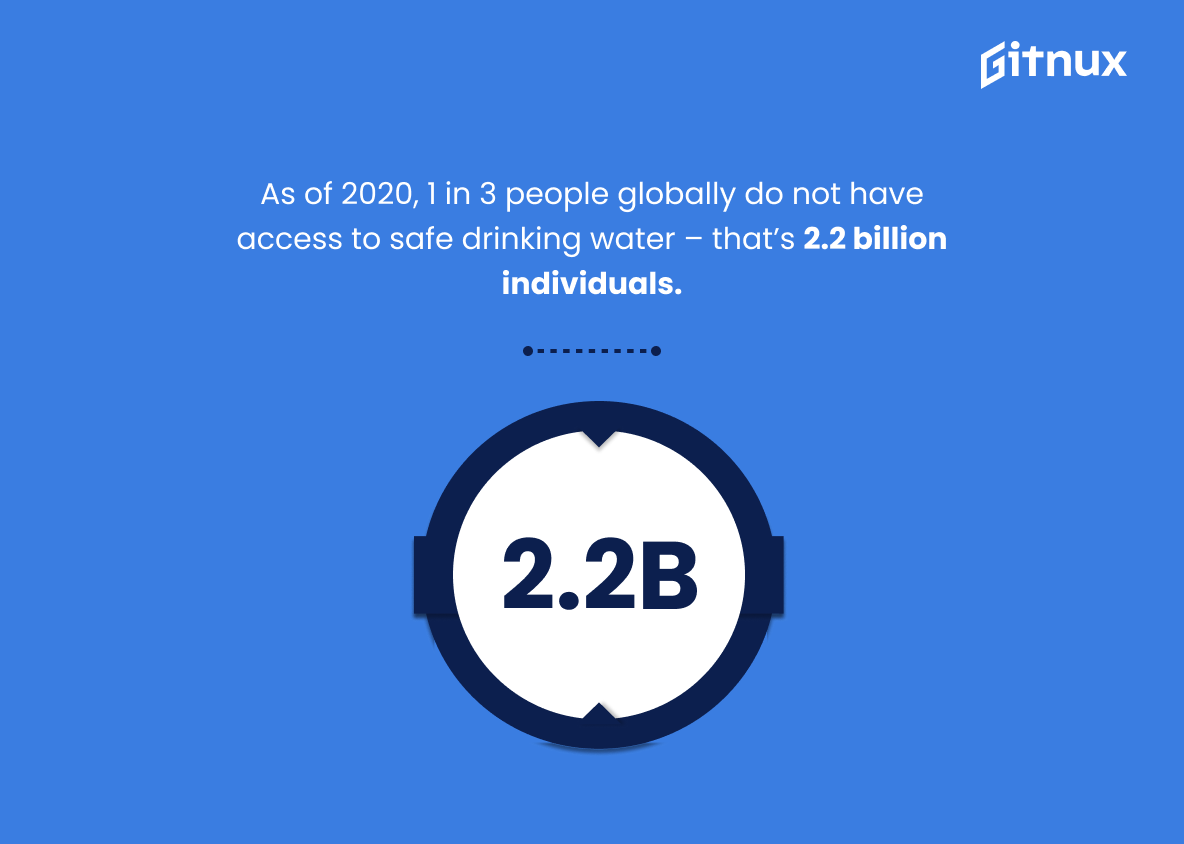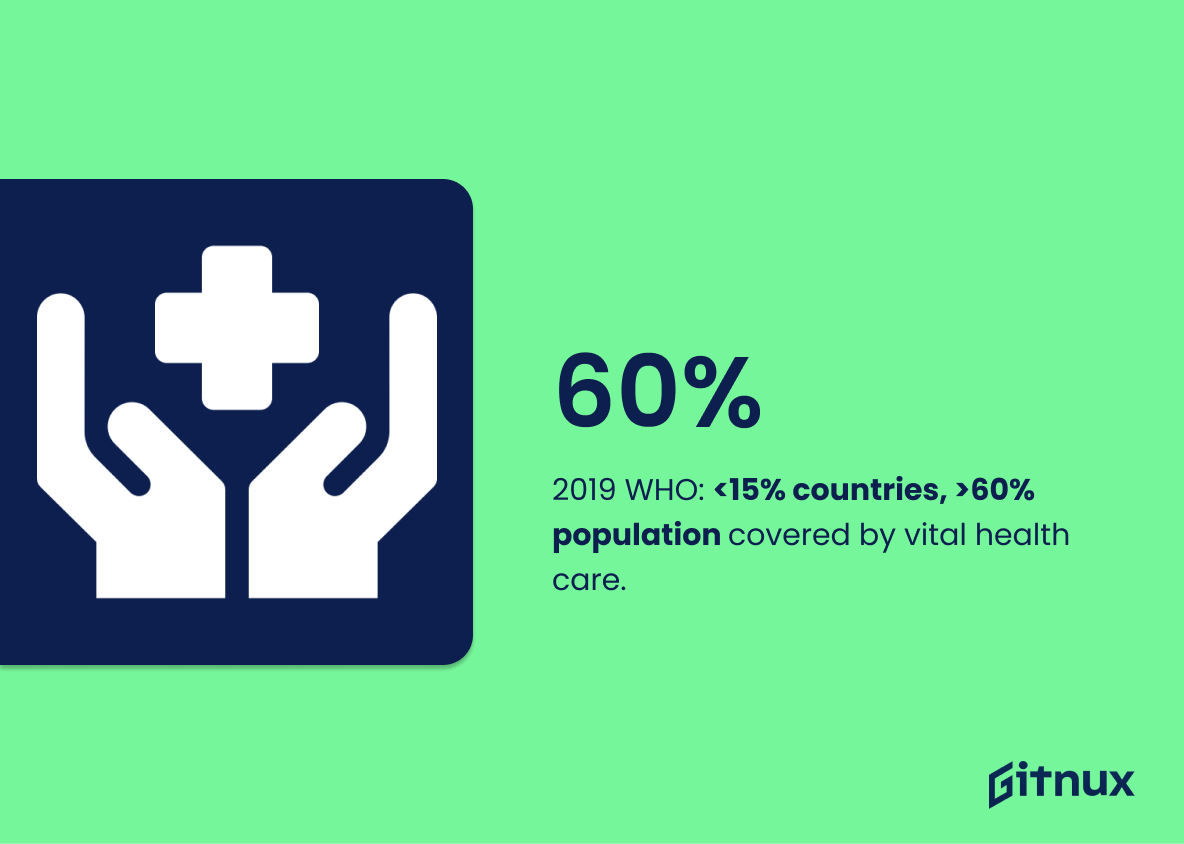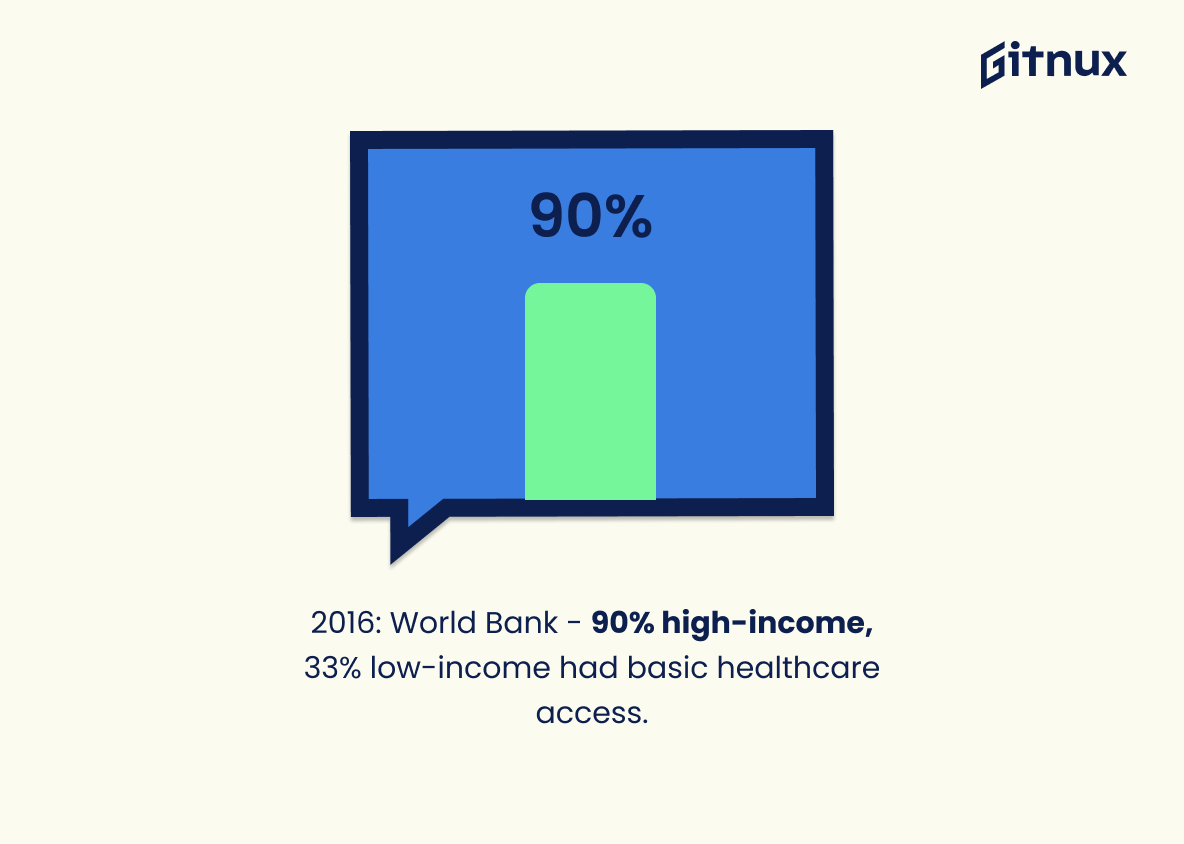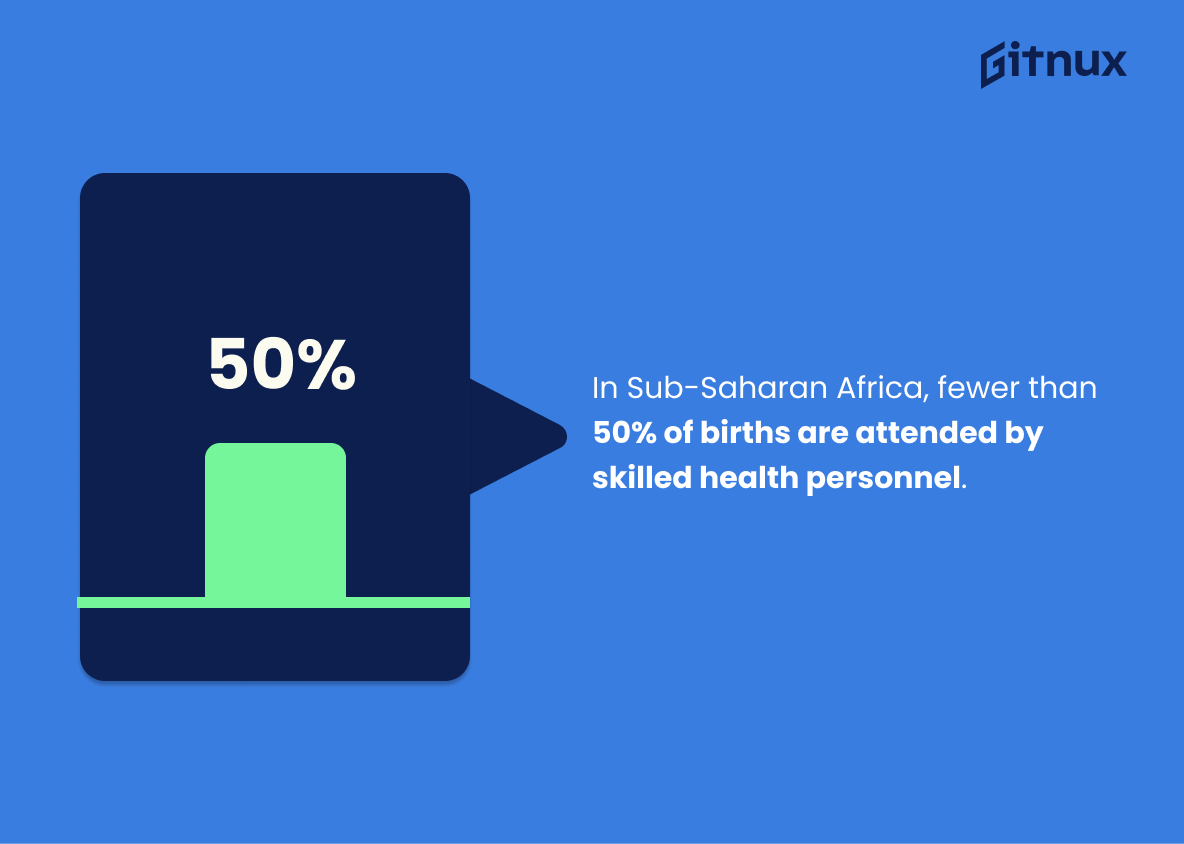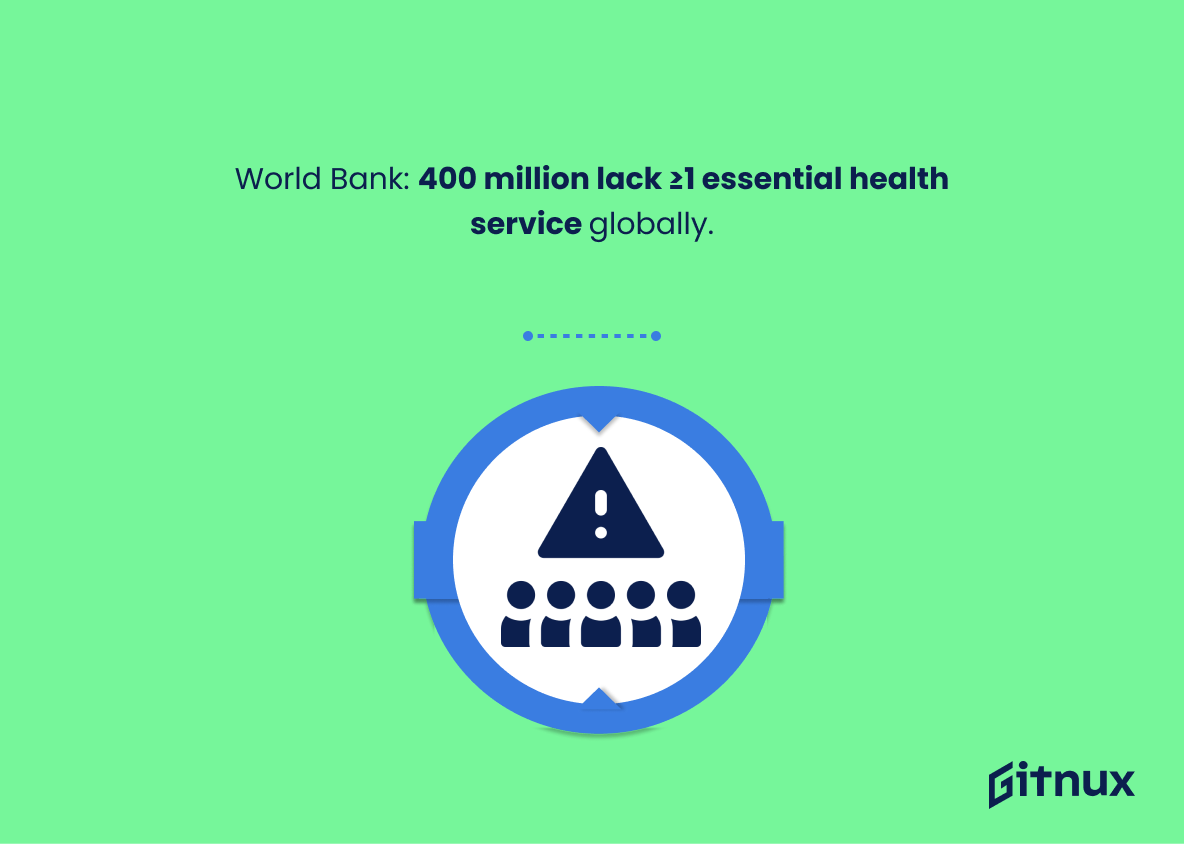Navigating through the complex world of global healthcare often presents a myriad of challenges. With disparities in access creating vast differences in health outcomes across the world, it’s critical to scrutinize reliable, comprehensive data and what it reveals about the state of global access to healthcare. In this insightful blog post, we’ll delve deep into the labyrinth of global healthcare, unearthing enlightening statistics and trends that shed light on access to health services around the globe. Whether you’re a healthcare enthusiast, a policy maker, or simply curious, we’re certain this analysis of the numbers will give you a new perspective on global health realities. Get ready to embark on a journey of knowledge and discovery, as we unpick the revealing narrative behind global access to healthcare statistics.
The Latest Global Access To Health Care Statistics Unveiled
As of 2017, approximately half of the world’s population lacked access to essential health care services.
Highlighting the statistic that “As of 2017, approximately half of the world’s population lacked access to essential health care services”, serves as a stark reminder within a blog post on Global Access To Health Care Statistics. The gravity of this fact unearths the monumental disparities and challenges faced on a global scale. This figure gives readers a quantitative snapshot of the breadth and depth of the problem – translating the abstract concept of global health inequality into tangible numbers. It acts as the sobering bell toll in the health care discourse that rings out, calling for prompt attention and immediate action to ensure equal health care opportunities for everyone, everywhere.
In 2016, according to the World Health Organization, low-income countries spent 40 times less on health per person than high-income countries.
When navigating through the complex pathways of global access to healthcare statistics, the WHO’s revelation that low-income countries expended 40 times less on health per person than their high-income counterparts in 2016, becomes a startling crescendo in the symphony of inequity. This data snippet underscores, without needing any extra embellishment, the colossal disparities in global health spend.
This skyscraping gap casts a UN-HD index like shadow, eerily reflecting the parallel socioeconomic disparities and hinting at the predictably precarious state of health access in these less affluent nations. Scrutinizing this statistic is a bit like unmasking a grim-faced villain in a thriller, revealing hard-hitting truths about resource allocation, affordability, and universal health coverage.
Demonstrating the gravity of this financial chasm aids in fortifying the cause of international organizations, NGOs, and policy-makers alike. In raising awareness and echoing the need for amplified investment in health, particularly in resource-limited settings, we can foster a receptive environment for healthcare reforms.
So, next time these health disparities try to weave through the back alleys of forgotten facts, we should shine a spotlight on them, for they are not just mere numbers but the pulse of global health equity.
As of 2019, 38% of health facilities in lower-income nations lack any water source.
Delving into the stark raw numbers, one discovers an alarming fact: in 2019, an astounding 38% of health facilities in lower-income nations were operating without a water source. This is a critical consideration when discussing Global Access to Health Care Statistics. The absence of water, considered a basic necessity, creates a severe impediment not only to health care provision, but also to maintaining hygiene standards, and ultimately, in preserving human life. The ripple effects of this shortfall impact the quality of life, equity, and longevity. It paints a sobering picture of unequal resource distribution and the disproportionate challenges faced by low-income nations in offering crucial healthcare services. Thus, this reality unwaveringly underscores the vital need for resource allocation and infrastructural improvements in the global health landscape.
An estimated 3.6 billion people worldwide, including millions in high-income countries, face inadequate access to surgical care.
Painting a compelling picture of the global healthcare landscape, the staggering statistic of 3.6 billion people facing inadequate access to surgical care underscores the immense discrepancies in health resources across the globe. Shedding light on these disparities, the figure additionally reveals that healthcare inadequacies exist not solely in developing nations but also amidst the affluent societies. This revelation not only emphasizes the universal nature of medical inequities but also prompts further discussions about standardized access to quality surgical care. When placed in the lens of a blog post about Global Access to Health Care Statistics, it serves as a potent reminder on the pressing need to bridge the global healthcare gap, ultimately steering conversations and actions towards the universal goal of accessible and quality healthcare for all.
According to the World Bank, in 2019, around 97 million people were pushed into extreme poverty due to out-of-pocket spending on health.
Painting a vivid picture of global health care accessibility, this World Bank statistic offers a stark glimpse into the harsh realities faced by millions. The fact that approximately 97 million people were plunged into extreme poverty due to out-of-pocket health expenses in 2019 alone, underscores the striking financial barriers many encounter when seeking health care. Integral in distinguishing the world’s haves and have nots in the realm of health care access, this statistic punctuates the gravity of global healthcare disparities. Therefore, it serves as a critical talking point in any discussion about international health care access.
From 2000 to 2017, the proportion of the global population using at least basic drinking-water services increased from 61% to 71%.
Highlighting the rise in the proportion of the global population using at least basic drinking-water services illuminates an encouraging narrative of progress in the domain of global health access. Between 2000-2017, the leap from 61% to 71% is indicative of the strides made in the delivery of fundamental health care necessities, and reinforces the fact that access to clean, safe drinking water is an essential cornerstone for healthy communities. This statistic, therefore, becomes instrumental in underscoring the intersections between access to water and health and provides valuable context for discussions around improving global health metrics. It serves as a fundamental gauge of where we’ve come and where we need to direct our efforts in order to ensure universal health care access.
According to a WHO report, as of 2018, only 1 in 5 countries had health service coverage which was considered high.
The intricacies behind the statistic issued by WHO that less than 20% of countries had high health service coverage in 2018 weaves a crucial thread in the grand pattern of Global Access to Health Care Statistics. It raises a glass to shed light on the glaring disparity affecting health service distribution globally. It not only magnifies the healthcare crisis faced by the 80% majority but also highlights the critical need for implementing strategic health policies and increased funding towards improving universal health coverage. This data stitch is integral to evaluating our medical progress as a global community, identifying the chasms, and binding the narrative as we chart the course for an equitable healthcare future.
The World Health Assembly had set a target to reach 1 billion more people with health coverage between 2019 and 2023.
Reflecting upon the statistic, one gains magnetic insight into the scope and ambition of worldwide healthcare endeavors. The World Health Assembly’s audacious goal to extend healthcare to an additional one billion people from 2019 to 2023, evokes a momentous ripple in the ocean of global healthcare statistics. This influential figure serves as a barometer for assessing global healthcare infrastructure and progress, advocating for comprehensive health accessibility as a basic human right. Moreover, in the grand tapestry of the blog post focused on Global Access To Health Care Statistics, this data adds color and context, anchoring the discussion towards the colossal effort and dedication required to bridge the global healthcare gap.
As of 2015, the global density of health workers was 9.9 per 1000 population.
Spotlighting the ratio of healthcare workers to the global population – a revealing 9.9 per 1000 as of 2015 – surreptitiously unearths the challenging landscapes of global healthcare access. This numerical nugget, seen through the prism of Global Access to Healthcare Statistics, offers a precise pulse check on the availability of these crucial healthcare warriors against the needs of a burgeoning humanity. Moreover, it paves the way for understanding disparities in healthcare access across different regions and populations, sparking conversations around strategies for improving this ratio and thereby enhancing healthcare accessibility worldwide.
As of 2020, 1 in 3 people globally do not have access to safe drinking water – that’s 2.2 billion individuals.
Illuminate the stark reality reflected by these figures: a distressing percentage of the planet’s populace, specifically 2.2 billion individuals, subsists without access to safe drinking water by 2020. This number is not a mere statistic, but a poignant affirmation of the disparity in global access to fundamental healthcare needs. Like a drop rippling through a pond, such lack of clean water has profound implications on a population’s health. Waterborne diseases become rampant, instigating a chain reaction that affects other areas of healthcare such as nutrition and immunity. Thus, this alarming data serves as a bellwether of the urgent requirement for global attention and concrete action towards achieving universally equitable healthcare.
As reported in 2019 by the World Health Organization, less than 15% of countries have more than 60% of their population covered with essential health services.
Undeniably, the statistic reported by the World Health Organization in 2019 casts a stark illumination on the uneven geographical distribution of essential health services. It reveals a poignant reality—less than 15% of countries can boast of having more than 60% of their people covered with essential health services. Planet Earth is an echoing chamber voicing a grave health disparity, thus making it a compelling focal point in the discussion of global access to healthcare. The relentless objective behind this blog post is to spotlight such glaring disparities, in a bid to foster awareness, stir conversations, provoke thoughts, and hopefully inspire changes. Hence, the injection of this noteworthy statistic into the body of the discussions articulated in this blog post.
In 2016, World Bank data showed that 90% of people in high-income countries had access to basic health care, compared to 33% in low-income countries.
Highlighting the disparity of basic healthcare access through the 2016 World Bank data provides a powerful lens to view the global healthcare narrative. It underscores the seemingly insurmountable chasm between high-income and low-income nations. With 90% of high-income populations enjoying access to basic healthcare, as contrasted to a meager 33% in low-income countries, the statistic shines a bold light on the inequalities prevalent in global healthcare availability. This isn’t merely about numbers. It’s a tale of how economic affluence directly influences healthcare accessibility, reaffirming that health is not just a personal concern but a reflection of wider socio-economic constructs. As we delve deeper into global access to healthcare statistics, it’s crucial to consider this stark contrast as a call-to-action, urging us to bridge this divide for universal healthcare; bringing us one step closer to a world where quality health services are not a privilege confined to the economically affluent, but a fundamental right for all.
The World Health Organization estimates that over one billion people, or 15% of the global population, have some form of disability, and nearly 200 million people experience considerable difficulties in functioning.
In a world striving for wellness, it’s striking to soak in the reality presented by the World Health Organization’s estimate: over one billion people, accounting for 15% of the global population, grapple with some form of disability, and a staggering near 200 million undergo significant functional impairments. This data is a profound mirror held up to reflect urgent, widespread health issues. By understanding the immense magnitude of people suffering from disabilities, we are witnessing the stark truth about the immense health care access gaps. It also illuminates the urgency for more inclusive, accessible health care facilities on a global scale. Furthermore, it stimulates a more profound debate about health inequality, bringing to light the urgency of developing tailored medical interventions, creating enabling environments, and pushing forward efficient public policies to address health inequalities widely and urgently. This statistic isn’t merely a number. It’s a persuasive call to action to revolutionize global healthcare accessibility to meet the diverse needs of a diverse world.
In Sub-Saharan Africa, fewer than 50% of births are attended by skilled health personnel.
Crunching the numbers reveals a haunting narrative; in Sub-Saharan Africa, the scales of healthcare tilt heavily, unwaveringly, with fewer than 50% of births cradled in the hands of skilled health personnel. This statistic underscores a key global healthcare issue and paints a vivid picture of the disparity in medical coverage, especially in birthing services, between Sub-Saharan Africa and the rest of the world. Within a blog post exploring Global Access to Healthcare Statistics, this acknowledgment serves as an impactful revelation, nudging readers to understand the alarming urgency for efficient, effective health reforms and assistance. Not just a mere statistic, it encapsulates a poignant reality – every birth unattended symbolizing a desperate plea for health equality and improved medical access across the globe.
The World Bank Group estimates that 400 million people worldwide lack access to at least one of seven essential health services.
Delving into the profound implication of this figure by the World Bank Group, it underlines a daunting reality: 400 million individuals globally are deprived of at least one of seven critical health services. This astonishing data paints a vivid picture of the immense health care inaccessibility crisis on a global scale, setting the stage for a deeper discussion in a blog post about Global Access to Health Care Statistics. It propels a dialogue about health equity, availability of holistic healthcare services and the policy doyens needed to address this monumental void. Thus, it acts as the fulcrum on which our understanding and improvement of global health access pivots.
Conclusion
Global access to health care continues to be a pressing issue. The existing gaps between different regions, countries, and ethnicities clearly highlight an urgent need for the universal advancement of healthcare rights and services. By relying on the recent health care statistics, it’s essential for policymakers, global organizations, and health care providers to work hand in hand in order to bridge these gaps. Coupled with the efforts of communities and individuals, we can make significant steps toward a healthier, more equable world. Remember, equitable access to health care isn’t just a possibility, it’s a right. Enhancing our understanding of the current statistics is a vital step on the path to global health equality, allowing us to drive change where it is needed most.
References
0. – https://www.data.worldbank.org
1. – https://www.www.ncbi.nlm.nih.gov
2. – https://www.www.un.org
3. – https://www.blogs.worldbank.org
4. – https://www.hbr.org
5. – https://www.www.who.int
